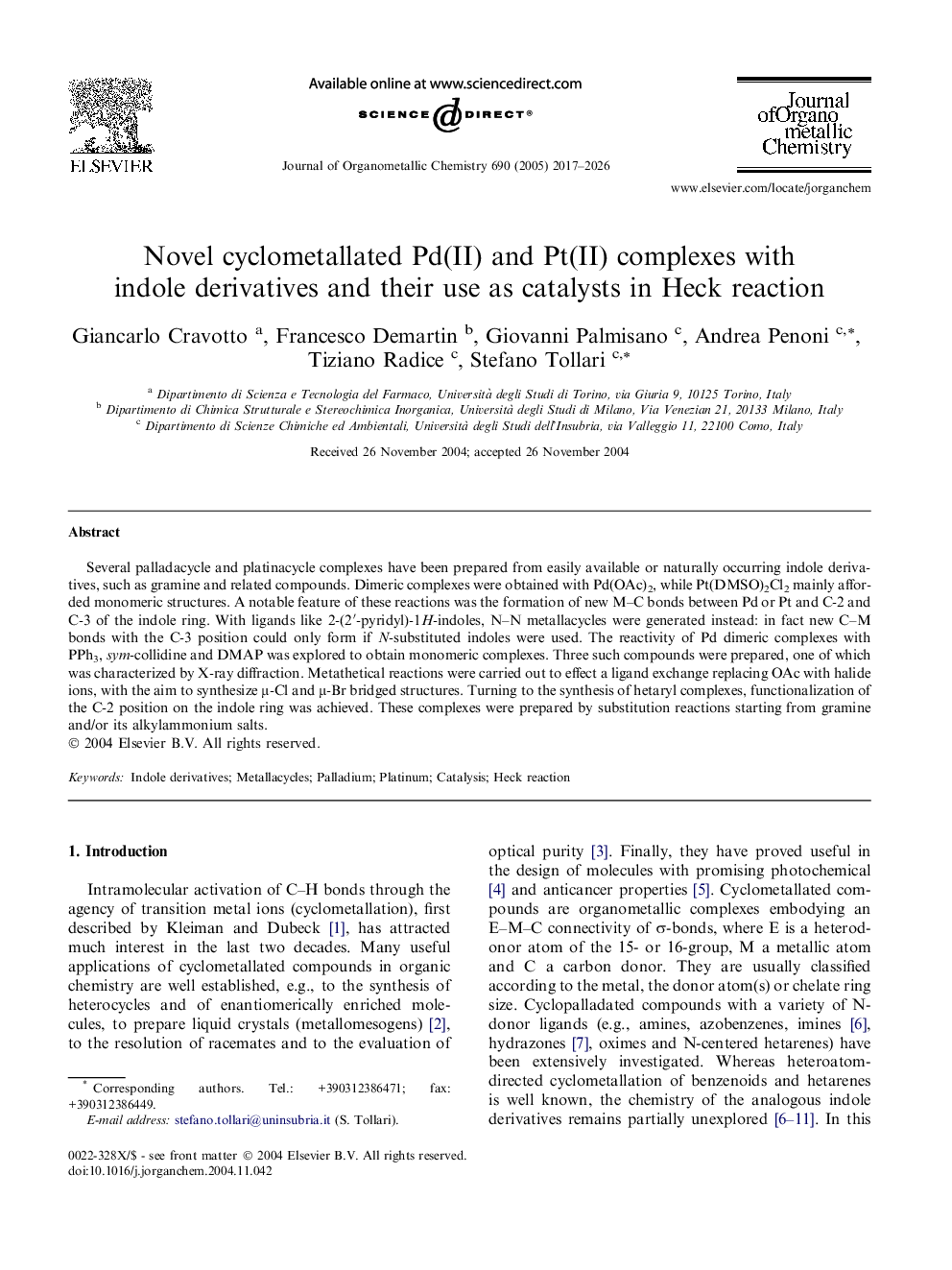| Article ID | Journal | Published Year | Pages | File Type |
|---|---|---|---|---|
| 1328697 | Journal of Organometallic Chemistry | 2017 | 10 Pages |
Several palladacycle and platinacycle complexes have been prepared from easily available or naturally occurring indole derivatives, such as gramine and related compounds. Dimeric complexes were obtained with Pd(OAc)2, while Pt(DMSO)2Cl2 mainly afforded monomeric structures. A notable feature of these reactions was the formation of new M–C bonds between Pd or Pt and C-2 and C-3 of the indole ring. With ligands like 2-(2′-pyridyl)-1H-indoles, N–N metallacycles were generated instead: in fact new C–M bonds with the C-3 position could only form if N-substituted indoles were used. The reactivity of Pd dimeric complexes with PPh3, sym-collidine and DMAP was explored to obtain monomeric complexes. Three such compounds were prepared, one of which was characterized by X-ray diffraction. Metathetical reactions were carried out to effect a ligand exchange replacing OAc with halide ions, with the aim to synthesize μ-Cl and μ-Br bridged structures. Turning to the synthesis of hetaryl complexes, functionalization of the C-2 position on the indole ring was achieved. These complexes were prepared by substitution reactions starting from gramine and/or its alkylammonium salts.
Graphical abstractSynthesis and characterization of indole-based metallacycles are reported. The performance of some palladacycles as (pre)catalysts for the Heck cross-coupling reaction using iodobenzene and tert-butyl acrylate has been tested.Figure optionsDownload full-size imageDownload as PowerPoint slide
